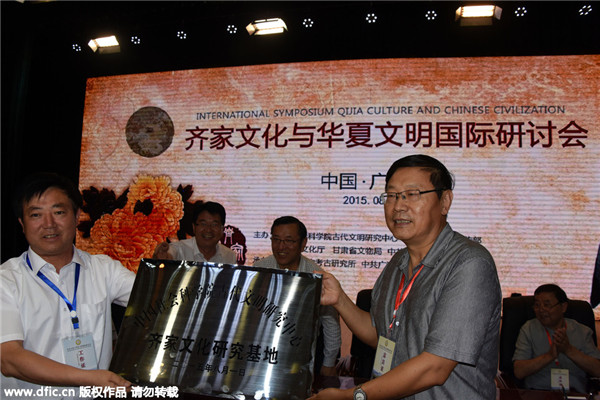 |
|
Qijia Culture Research Center has been set up during the international symposium on Qijia culture and Chinese civilization in Guanghe county, Northwest China's Gansu province, Aug 1, 2015. [Photo/IC] |
The Qijia culture was first discovered by Swedish archaeologist Johan Gunnar Andersson in 1924 at Qijiaping in Guanghe.
It spread around the upper reaches of the Taohe, Daxia and Weihe rivers in Gansu and the Huangshui basin in the upper reaches of the Yellow River in Qinghai, during the transitional period from the Neolithic Age to the Bronze Age (2250-1900 BC).
Qijia culture was in the period of the formation of early Chinese civilization, said Wang Wei, head of the Institute of Archeology in the Chinese Academy of Social Sciences.
According to Wang, through the research of the origins of Chinese civilization, Xia Dynasty (c.21st century-16th century BC) is not the beginning. Before that, different regional civilizations were there and Qijia culture was one of them.
Qijia culture was at a same time as the Longshan culture (2500-2000 BC), which was widespread in the central plains in the middle and lower reaches of the Yellow River, and is characterized by fine unpainted ceramics and simple tools.
Wang said that Qijia culture played a crucial role in the formation of ancient Chinese civilization by connecting Central Asia, West Asia and the middle reach of the Yellow River. Serving as an important passageway, it enabled the introduction of crops and livestock such as wheat and sheep to the Central Plains in China
During the symposium, Qijia Culture Research Center has been established, and scholars also viewed the jade ware, bronze ware, and porcelains at the Qijia Culture Museum.
|
|
|
|
|
|
|
|
